 Open Access
Open Access
ARTICLE
Simulated Annealing with Deep Learning Based Tongue Image Analysis for Heart Disease Diagnosis
Department of Computer and Information Science, Annamalai University, Chidambaram, 608002, India
* Corresponding Author: S. Sivasubramaniam. Email:
Intelligent Automation & Soft Computing 2023, 37(1), 111-126. https://doi.org/10.32604/iasc.2023.035199
Received 11 August 2022; Accepted 04 November 2022; Issue published 29 April 2023
Abstract
Tongue image analysis is an efficient and non-invasive technique to determine the internal organ condition of a patient in oriental medicine, for example, traditional Chinese medicine (TCM), Japanese traditional herbal medicine, and traditional Korean medicine (TKM). The diagnosis procedure is mainly based on the expert's knowledge depending upon the visual inspection comprising color, substance, coating, form, and motion of the tongue. But conventional tongue diagnosis has limitations since the procedure is inconsistent and subjective. Therefore, computer-aided tongue analyses have a greater potential to present objective and more consistent health assessments. This manuscript introduces a novel Simulated Annealing with Transfer Learning based Tongue Image Analysis for Disease Diagnosis (SADTL-TIADD) model. The presented SADTL-TIADD model initially pre-processes the tongue image to improve the quality. Next, the presented SADTL-TIADD technique employed an EfficientNet-based feature extractor to generate useful feature vectors. In turn, the SA with the ELM model enhances classification efficiency for disease detection and classification. The design of SA-based parameter tuning for heart disease diagnosis shows the novelty of the work. A wide-ranging set of simulations was performed to ensure the improved performance of the SADTL-TIADD algorithm. The experimental outcomes highlighted the superior of the presented SADTL-TIADD system over the compared methods with maximum accuracy of 99.30%.Keywords
Coronary heart disease (CHD) has become a crucial part of cardiovascular disease (CVD) and the leading factor which causes death and disability across the world. CHD is considered a major health issue which burdens medical treatment and society [1]. Improving the prevention level and treatment of CHD is highly significant because of the rising mortality of CHD in China [1]. Current research on TCM syndromes of CHD display that phlegm and blood stasis syndrome (PBSS) accounts for a rising percentage of CHD syndromes [1,2]. The most dominant disease of Traditional Chinese Medicine (TCM) is CHD, accumulating 2,000 years of treatment practice [2]. TCM contains unique benefits in CHD treatment and displays favourable efficiency. The worldwide demand for basic healthcare assistance and technology development allows the platforms for point-of-care (POC) diagnostics [3]. Despite the current advancements in automatic disease diagnosing tools, the requirement of blood serum through recognition time, inexperience, reliability, precision, and the need for a second confirmatory test were the problems that must be overtaken. Therefore, skin color, temperature, retinopathy, facial expressions, tongue diagnosis, and surface are vital variables for future smartphone-oriented clinical expert systems for attaining non-invasiveness, simplicity, automatic analysis, and immediacy [4].
Tongue diagnosis becomes an effectual non-invasive process to measure the inner organ condition of the patient. The diagnosis procedure is reliable based on experts’ opinions on visual inspection encompassing the tongue’s form, color, coating, motion, and substance [5]. Conventional tongue diagnosis was inclined to identify the syndrome instead of the abnormal appearance and disease of the tongue [6]. For example, the tongue coating’s yellow-dense and white-greasy appearance specify hot and cold syndromes, which can be linked with health conditions like endocrine disorders or immune, infection, stress, and inflammation, which can be 2 parallel but correlated syndromes from TCM. Abolishing the dependence on the subjective and experience-related valuation of tongue analysis might raise the scope for broader usage of tongue diagnosis globally, including in Western medicine [7]. Computerized tongue examination containing geometry study, color correction, image investigation, tongue segmentation, light estimation, etc., is a potential tool for diagnosing disease targeting to overcome such concerns.
The benefit of tongue diagnosis, it is a non-invasive and simple method. But it becomes hard to gain a standardized and objective examination. Variations in inspection conditions, like light sources, influence outcomes significantly [8]. Furthermore, because the diagnosis depends on the knowledge and experience of the clinician, it becomes difficult to gain a standardized outcome. Currently, several research works are being conducted to solve such issues. This study summarises the advancement of current technologies and tongue diagnosis [9]. The general computerized tongue diagnosis procedure is classified into 2 methods. Firstly, the conventional machine learning (ML) technique. This technique generally segregates the raw tongue image, extracts features like shape, color, spectrum, and texture from the tongue image segmented and chooses the classifier to attain tasks like recognition and classification at the end [10]. Secondly, the deep learning (DL) technique generally utilizes raw data for feature extraction and training by convolution functions.
This manuscript introduces a novel Simulated Annealing with Transfer Learning based Tongue Image Analysis for Disease Diagnosis (SADTL-TIADD) model. The presented SADTL-TIADD model focuses on detecting and classifying diseases using tongue images, namely CVD and pneumonia. To accomplish this, the SADTL-TIADD model was initially Bilateral Filter (BF) based pre-processing and CLAHE-based contrast enhancement. Next, the presented SADTL-TIADD technique employed an EfficientNet-based feature extractor to generate useful feature vectors. The SA with the extreme learning machine (ELM) model enhances classification efficiency for disease detection and classification. To ensure the improved performance of the SADTL-TIADD system, a wide-ranging set of simulations can be performed.
The author in [11] utilises deep transfer learning (DTL) to analyse tongue images. First, tongue features are extracted using the pre-trained networks (Inception_v3 and ResNet), and later modification of the resultant layer of the original network with fully connected (FC) and global average pooling layers to output classification result. In [12], a lightweight segmentation method for tongue images is developed under the elementary encoding-decoding architecture. MobileNet v2 is accepted as the backbone network because of its lower computational complexity and fewer parameters. The lower-level positional and higher-level semantic data are combined to identify the tongue-body boundary. Then, the dilated convolutional operation is implemented on the last feature map of networks to expand the receptive field, capturing rich global semantic data.
In [13], the authors presented a Chinese Medicine based diabetes diagnosis dependent upon examining the extracting feature of the panoramic tongue image, namely texture, colour, shape, fur, and tooth markings. The extracting feature can be performed using Convolutional Neural Network (CNN)—ResNet50 model, and the classifier can be done using the presented Deep RBFNN approach based on an autoencoder (AE) learning module. Zhou et al. [14] developed an end-to-end mechanism for multi-task learning of tongue segmentation and localization, termed TongueNet, where pixel-level previous data is exploited for supervised training Deep CNN (DCNN). A feature pyramid network (FPN) is primarily introduced based on the context-aware residual block for extracting multiscale tongue features. Next, the tongue candidate’s region of interest (ROI) is positioned in the extracting feature map. Lastly, finer segmentation and localization of the tongue body were carried out based on the feature map of ROI.
In [15], the authors developed a computer-aided intelligent decision support mechanism. The CNN and DenseNet architecture was applied to identify the tongue images’ essential features, namely the fur coating, colour, texture, red spots, and tooth markings. The classifier support vector machine (SVM) has been applied to enhance the accuracy of the SVM parameter is tuned using the PSO algorithm. The authors in [16] proposed a 2-stage methodology dependent upon tongue landmarks and tongue region recognition through DL. Initially, a cascaded CNN is introduced for simultaneously detecting the tongue region and tongue landmark to maximize discriminatory data and minimize the redundancy data explicitly. Next, the identified region and landmark of the tongue are sent to a fine-grained classifier system for the last detection.
Wang et al. [17], an AI architecture with DCNN for detecting the tooth-marked tongue. Firstly, a larger dataset with 1548 tongue images is applied. Next, ResNet34 CNN infrastructure is used for extracting features and implementing classifiers. Mansour et al. [18] designed an automatic IoT and synergic DL-based tongue colour image (ASDL-TCI) investigation mechanism to classify and diagnose diseases. Initially, we used the IoT device to capture the human tongue image and transferred it to the cloud for detailed examination. Moreover, SDL-based feature extraction techniques and median filtering (MF) based image pre-processed is executed. In addition, DNN-based classification was employed to define the presence of diseases. Finally, enhanced black widow optimization (EBWO) based parameter tuning is performed to improve the detection accuracy. Though several ML and DL models for tongue image analysis are available in the literature, it is still needed to enhance the classification performance. Owing to the continual deepening of the model, the number of parameters of ML and DL models also increases quickly, which results in model overfitting. Since the trial and error method for parameter tuning is tedious and erroneous, metaheuristic algorithms can be applied. Therefore, in this work, we employ the SA algorithm for the parameter selection of the ELM model.
This study introduced a novel SADTL-TIADD approach to detect and classify diseases utilizing tongue images. To accomplish this, the SADTL-TIADD approach initially BF-based pre-processing and CLAHE-based contrast enhancement. Next, the presented SADTL-TIADD technique employed an EfficientNet-based feature extractor to generate useful feature vectors. For disease detection and classification, the SA with the ELM model is applied, and using SA enhances the classification efficiency. Fig. 1 depicts the block diagram of the SADTL-TIADD approach.
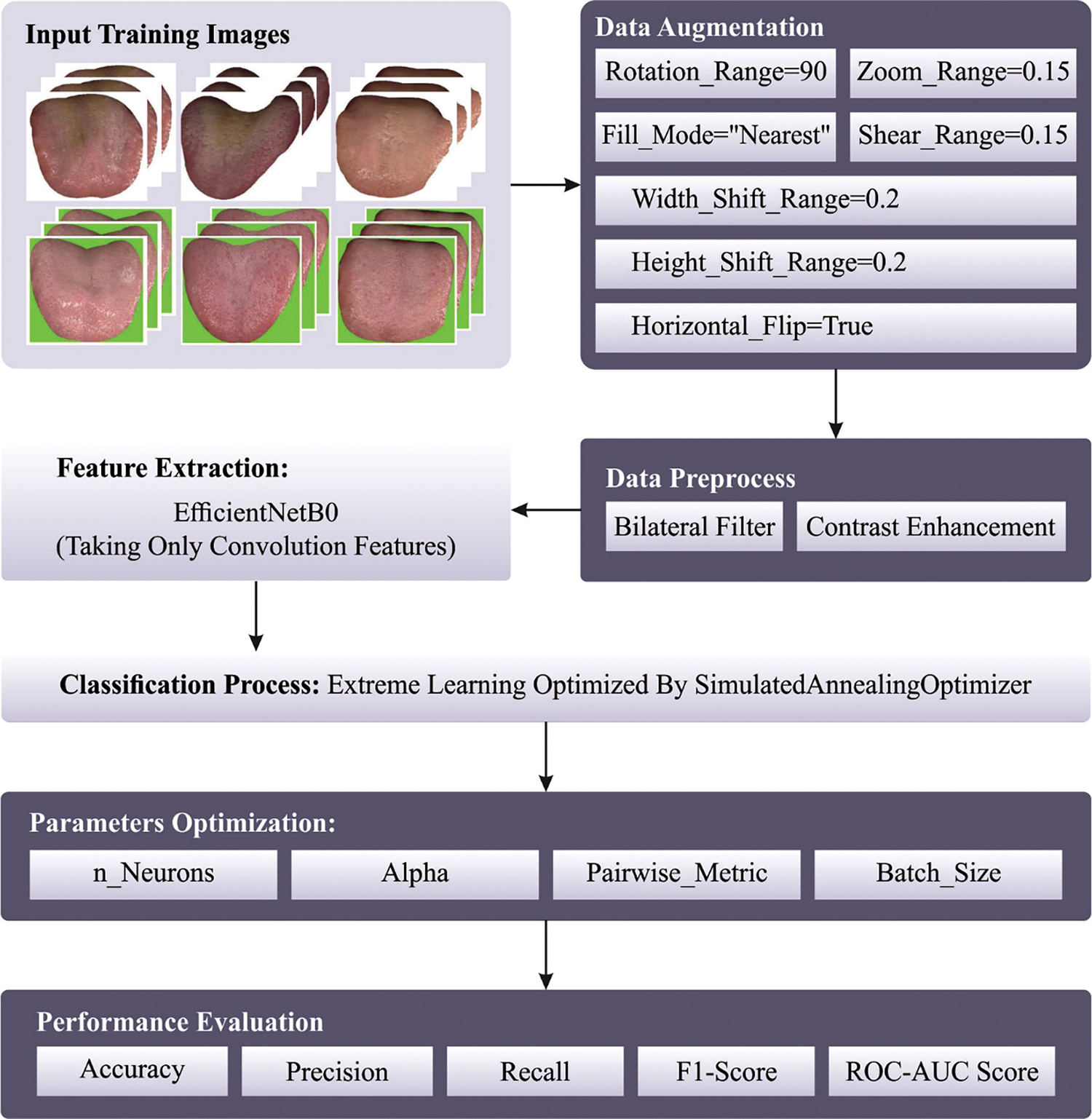
Figure 1: Block diagram of SADTL-TIADD approach
Primarily, the SADTL-TIADD model follows BF-based pre-processing and CLAHE-based contrast enhancement. Consider the BF employed to a 2D grayscale image
In Eq. (1),
The previous weight
The BF smooths an objective image using the adjacent pixel with the same intensity value that the objective pixel
Here,
In the following,
Let,
where
where
Eqs. (6) and (7) compute the number of un-distributed pixels. Eq. (8) is repeated until each pixel is redistributed. At last, the cumulative histogram of the context region is formulated as follows.
Afterwards, the calculation was done, and the histogram of context region corresponded with uniform, Rayleigh, or exponential possibility distribution that provides an attached brightness and visual quality. The pixel
Lastly, the enhanced image is attained.
At this stage, the presented SADTL-TIADD technique employed an EfficientNet-based feature extractor to generate useful feature vectors. The EfficientNet-B0 network exploits the recombination coefficient to automatically adjust the model's resolution, depth, and width and has features of high recognition accuracy and small parameters [21]. The input of EfficientNet-B0 is RGB (Red, blue, green) three-channel oil tea image with
EfficientNet-B0 scaling tries to extend the resolution
In Eq. (11)
In EfficientNet-B0, the compound coefficient
Let
For disease detection and classification, the SA with the ELM model enhances classification efficiency. ELM is an ML system that depends on an FFNN with an individual layer [22]. In ELM, computing the hidden state parameter is the method to determine the output weight, and the hidden state is stochastically constructed. This architecture approaches have a fast convergence rate and low computation difficulty. Also, it has benefits in generalization performance and fitting ability that of conventional gradient-based learning model. The typical ELM three-layer architecture has been demonstrated in Fig. 2.

Figure 2: ELM structure
The complete overview of the ELM traffic flow forecasting method is shown in the following. Firstly, the traffic flow at
Now
Here
The SA is utilised in this work to optimally adjust the ELM parameters such as several neurons, alpha, pairwise metric, and batch size. A search algorithm describes a process for defining a solution for the problem while discovering a mathematically well-defined searching space. Hill Climbing (HC) or Steepest ascent is an example of this model. It initiates with a primary solution replaced iteratively through the best neighbour until no more improvement is possible. This algorithm is completed if there exists an assurance of the result, a possible solution, and an optimum when it is assurance for defining an optimum amongst each solution. HC is either optimal or complete. Another searching technique is the Random Walk; at each step, a novel solution has been completely sampled at arbitrary or as a blind perturbation of the existing solution. This process is optimal and whole and provides an immense quantity of computation resources.
The SA is the middle ground between the two techniques; the metallurgy's annealing process stimulates this technique. The gradual cooling assists the condition for reaching a lower energy state, so metallic alloy atomic composition generates solid alloys with various properties of interest to industry. Once the heating and cooling process takes place rapidly, the metal alloy, in the end, may become brittle and won’t have a better internal structure. On the other hand, a low temperature makes them hard to accept candidate solutions of the worst quality. Hence, if the temperature is high, the model performs a random search at an early stage. In the end, if the temperature is low, it becomes similar to HC.
Algorithm 1 defines the pseudocode for SA. The process begins by producing an arbitrary primary solution and assigning the maximum value
Let
With a suitable temperature variation policy, the model can escape from local minima and progress to the best candidate solution, finally finding a better quality solution. To use the idea of annealing schedule and Genetic Programming (GP) to select amongst exchanging an individual parent with its children or not. In other words, the author uses SA to evolve the expression tree’s mathematical constant. The SA method would derive a fitness function (FF) for obtaining superior classifier results. It sets positive values for denoting superior outcomes of candidate solutions. During this article, the reduction of the classifier error rate has been regarded as the FF as provided below in Eq. (16). A good solution contains less error rate, and the worst one gains a higher error rate.
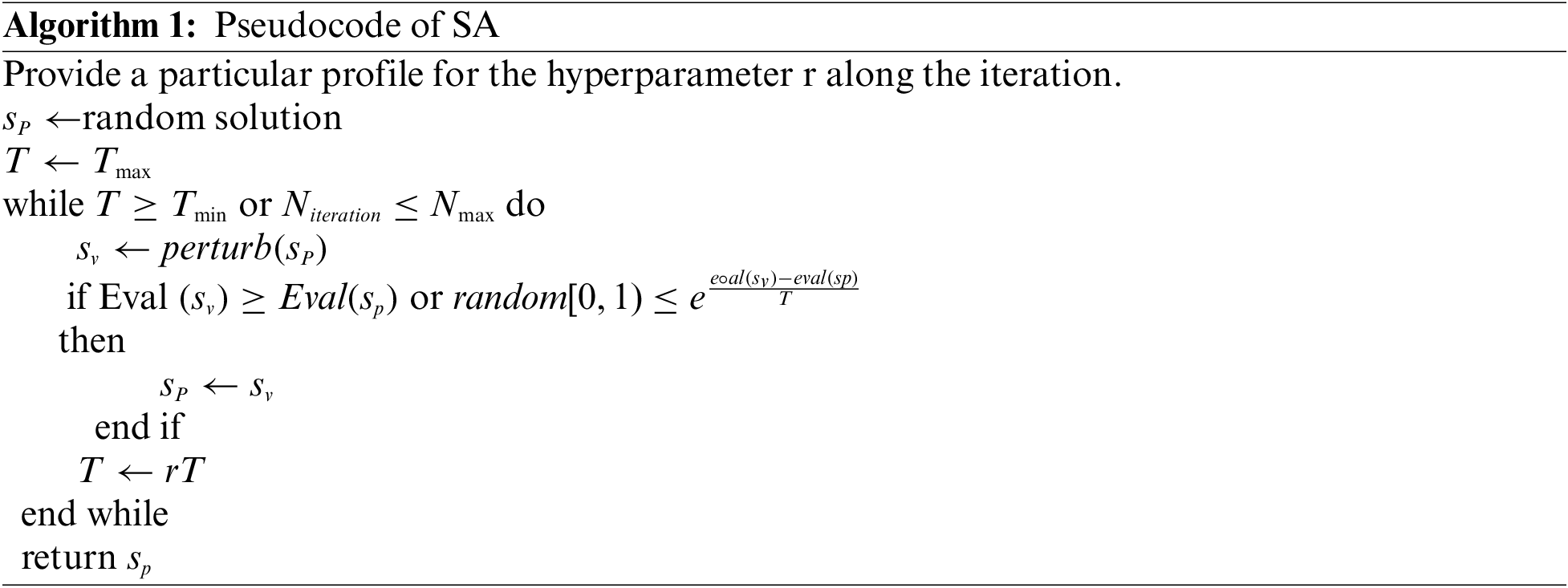
The presented model is simulated using the Python tool. Before the experimental validation process, data augmentation was carried out to increase the size of the dataset. The proposed approach uses a benchmark tongue image dataset containing images under various 12 class labels. We have taken 78 images in this study under CHD, pneumonia, and health class.
Fig. 3 depicts some original sample images. During this work, the data augmentation takes place in different ways:
• zoom_range = 0.15,
• rotation_range = 90,
• horizontal_flip = True,
• height_shift_range = 0.2,
• fill_mode = “nearest”,
• shear_range = 0.15,
• width_shift_range = 0.2
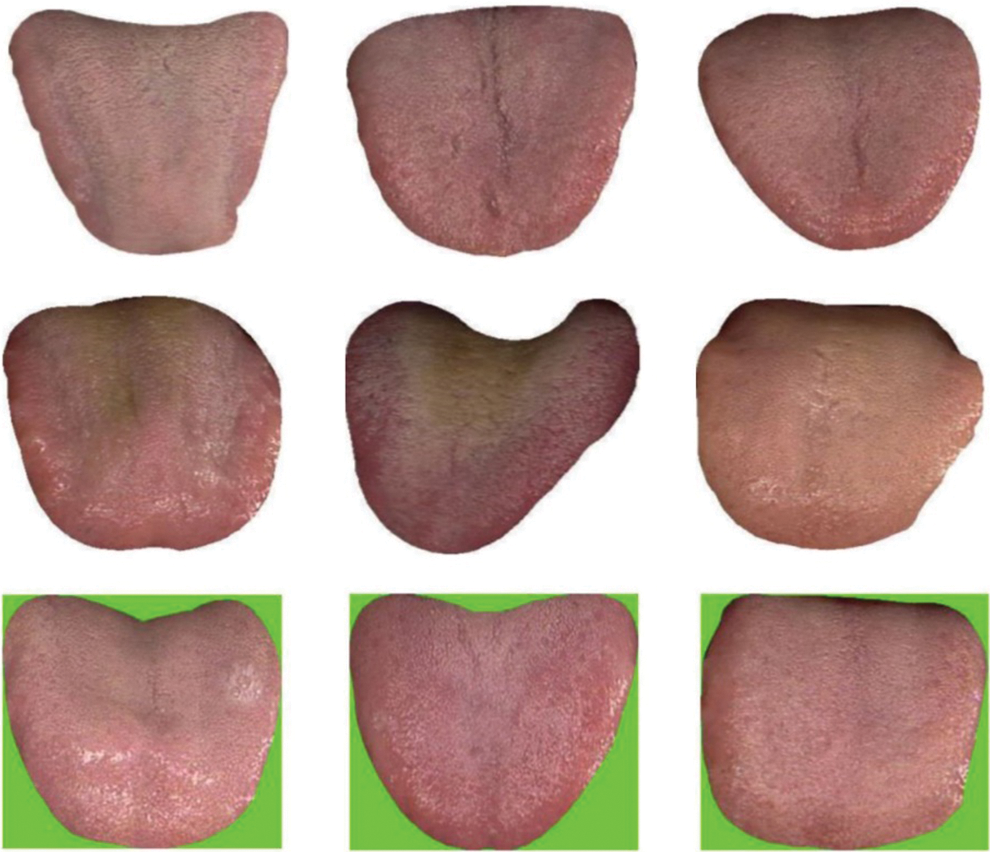
Figure 3: Original images
Figs. 4 and 5 demonstrate some sample pre-processing and extracted feature images.
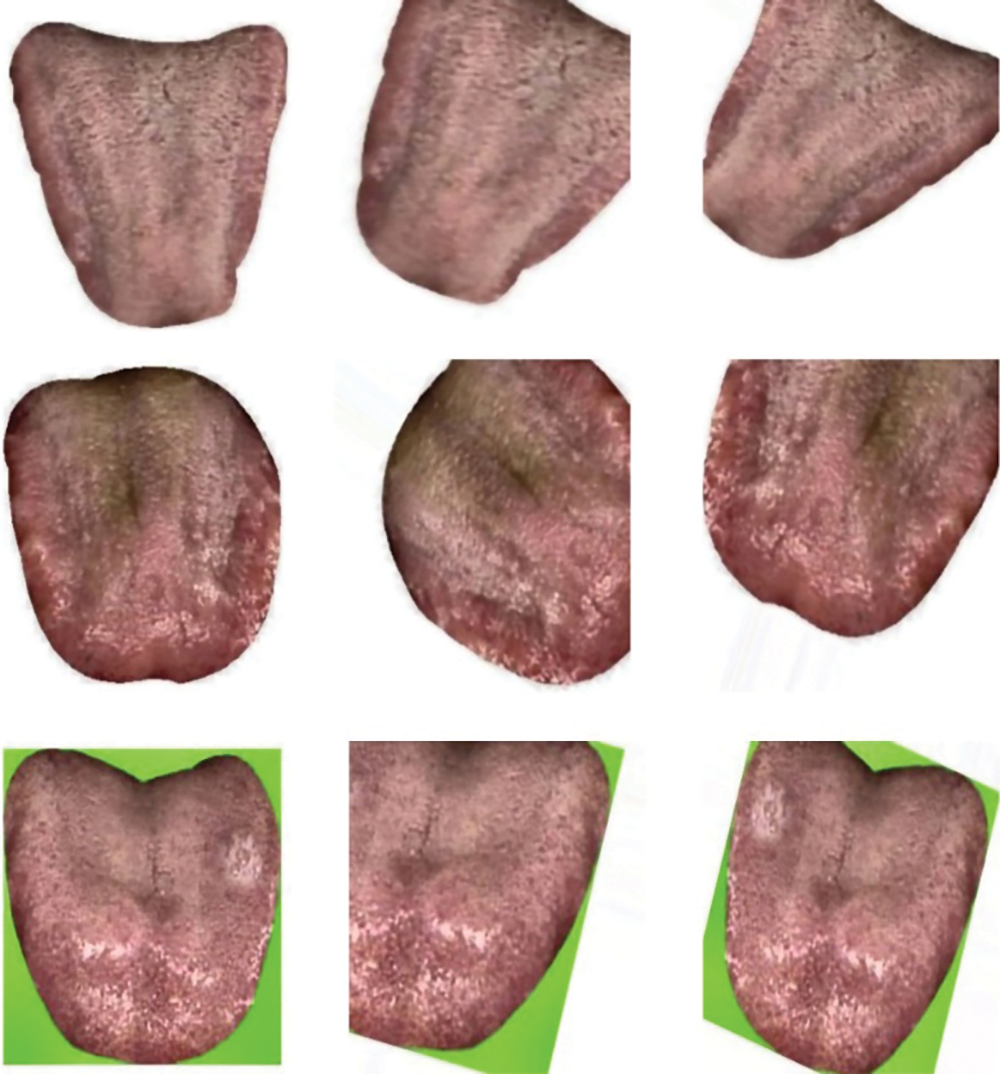
Figure 4: Pre-processed images
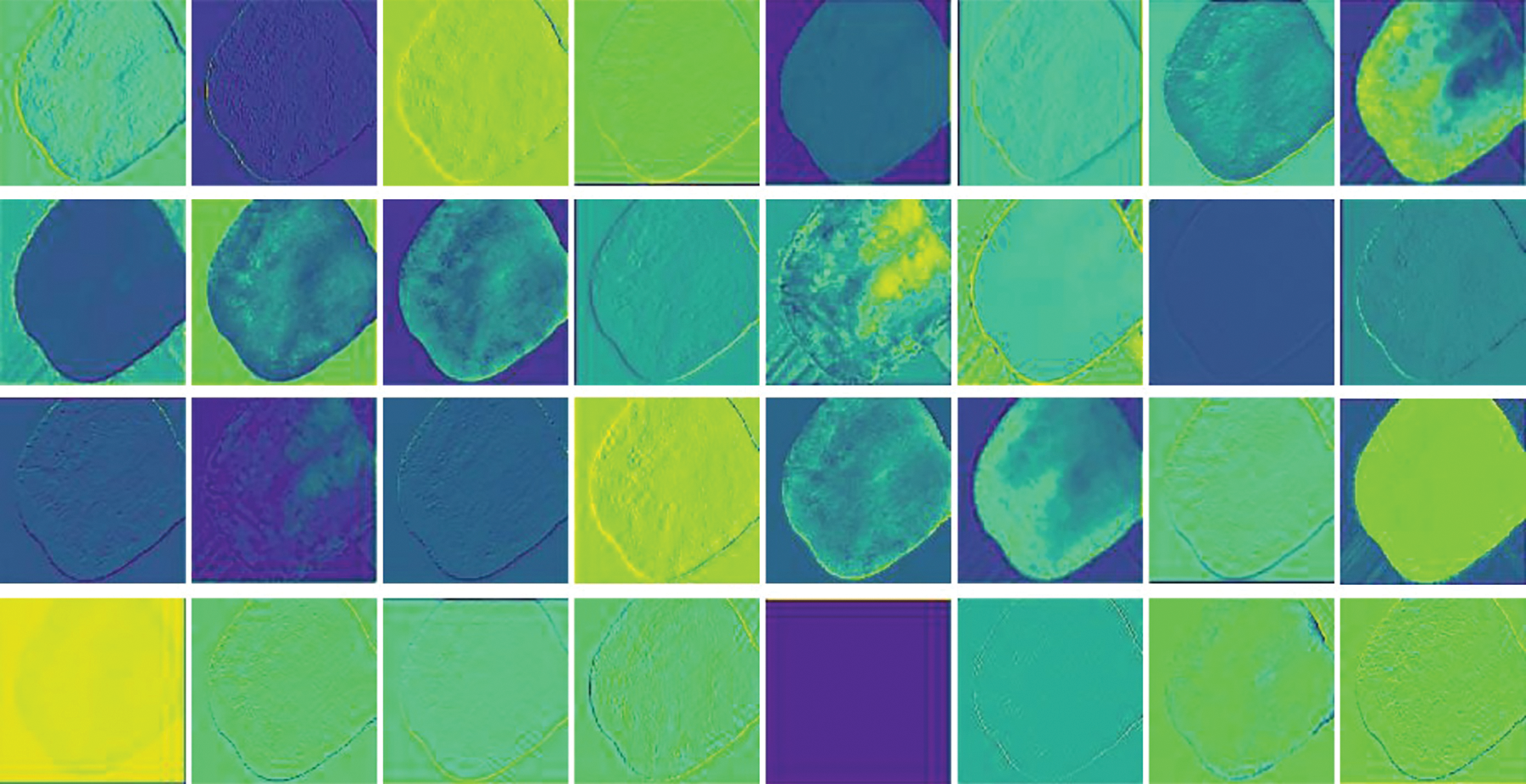
Figure 5: Extracted features
Table 1 provides the optimal parameter values of the ELM approach derived by the SA. The experimental values indicated different values obtained by the SA at the execution time. The optimal values are marked in bold font. The optimal ELM parameters are n_neurons: 0.0764, pairwise_metric: city block; batch size: 64, and score: 0.9859. Table 2 depicts a detailed description of the dataset.


Fig. 6 represents a detailed investigation of the SADTL-TIADD approach during the Training phase. Fig. 6a portrays the confusion matrix offered by the SADTL-TIADD technique. The figure demonstrated that the SADTL-TIADD model had identified 54 instances under class 1, 57 instances under class 2, and 52 instances under class 3. Afterwards, Fig. 6b illustrates the precision-recall analysis of the SADTL-TIADD model. The figures stated that the SADTL-TIADD technique had obtained maximal performance over distinct classes. Lastly, Fig. 6c illustrates the ROC investigation of the SADTL-TIADD model. The figure revealed that the SADTL-TIADD technique had obtained superior ROC values under distinct class labels.

Figure 6: Classification analysis of SADTL-TIADD approach under training phase (a) confusion matrix, (b) precision-recall, and (c) ROC curve
Fig. 7 showcases a brief investigation of the SADTL-TIADD technique during the testing phase. Fig. 7a depicts the confusion matrix offered by the SADTL-TIADD system. The figure stated that the SADTL-TIADD methodology had identified 24 instances under class 1, 21 instances under class 2, and 25 instances under class 3. Next, Fig. 7b demonstrates the precision-recall analysis of the SADTL-TIADD approach. The figures reported that the SADTL-TIADD model had obtained higher performance over distinct classes. Finally, Fig. 7c depicts the ROC investigation of the SADTL-TIADD technique. The figure stated that the SADTL-TIADD model had obtained higher ROC values under distinct class labels.
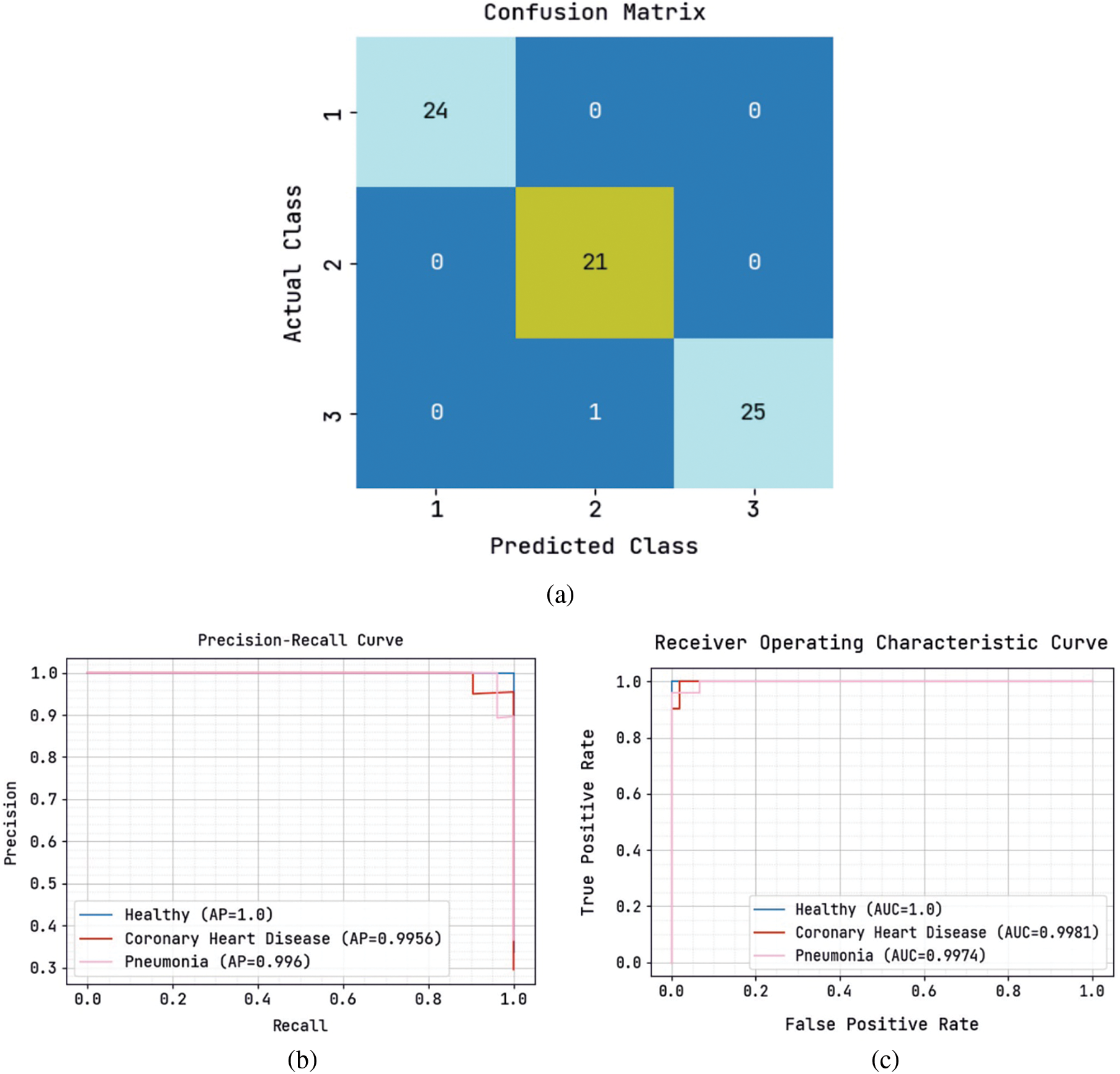
Figure 7: Classification analysis of SADTL-TIADD approach under testing phase (a) confusion matrix, (b) precision-recall, and (c) ROC curve
Table 3 provides comprehensive classification results offered by the SADTL-TIADD model. The experimental values indicate that the SADTL-TIADD approach has achieved effectual performance in all aspects.

For sample, on the training set, the SADTL-TIADD model has achieved
To demonstrate the enhanced performance of the SADTL-TIADD approach, a brief comparison study with recent models is carried out in Table 4 [18]. The experimental values inferred that the GF, SVM, Geometric Features using Sparse Representation-based Classification (GF-SRC), and K-Nearest Neighbor (KNN) models had reported lower

However, the presented SADTL-TIADD model outperformed the other models with a higher
This study established a novel SADTL-TIADD system for detecting and classifying diseases using tongue images. To accomplish this, the SADTL-TIADD approach initially BF-based pre-processing and CLAHE-based contrast enhancement. Next, the presented SADTL-TIADD technique employed an EfficientNet-based feature extractor to generate useful feature vectors. For disease detection and classification, the SA with the ELM model is applied, and using SA enhances the classification efficiency. A wide-ranging set of simulations was performed to ensure the improved performance of the SADTL-TIADD system. The experimental outcomes highlighted the superior of the presented SADTL-TIADD algorithm over the compared methods. Therefore, the SADTL-TIADD technique can be employed for productive tongue image analysis. In the future, the SADTL-TIADD methodology's performance will be enhanced using feature reduction techniques.
Funding Statement: The authors received no specific funding for this study.
Conflicts of Interest: The authors declare they have no conflicts of interest to report regarding the present study.
References
1. T. Jiang, X. J. Guo, L. P. Tu, Z. Lu, J. Cui et al., “Application of computer tongue image analysis technology in the diagnosis of NAFLD,” Computers in Biology and Medicine, vol. 135, no. 1, pp. 1–12, 2021. [Google Scholar]
2. E. Vocaturo, E. Zumpano and P. Veltri, “On discovering relevant features for tongue colored image analysis,” in Proc. of the 23rd Int. Database Applications & Engineering Symp., Athens Greece, pp. 1–8, 2019. [Google Scholar]
3. J. Hu, Z. Yan and J. Jiang, “Classification of fissured tongue images using deep neural networks,” Technology and Health Care, vol. 30, no. 8, pp. 271–283, 2022. [Google Scholar] [PubMed]
4. S. Dalam, V. Ramesh and G. Malathi, “Tongue image analysis for COVID-19 diagnosis and disease detection,” International Journal of Advanced Trends in Computer Science and Engineering, vol. 9, no. 5, pp. 7924–7928, 2020. [Google Scholar]
5. Q. Xu, Y. Zeng, W. Tang, W. Peng, T. Xia et al., “Multi-task joint learning model for segmenting and classifying tongue images using a deep neural network,” IEEE Journal of Biomedical and Health Informatics, vol. 24, no. 9, pp. 2481–2489, 2020. [Google Scholar] [PubMed]
6. H. Li, G. Wen and H. Zeng, “Natural tongue physique identification using hybrid deep learning methods,” Multimedia Tools and Applications, vol. 78, no. 6, pp. 6847–6868, 2019. [Google Scholar]
7. J. Li, Q. Chen, X. Hu, P. Yuan, L. Cui et al., “Establishment of non-invasive diabetes risk prediction model based on tongue features and machine learning techniques,” International Journal of Medical Informatics, vol. 149, no. 1, pp. 1–7, 2021. [Google Scholar]
8. D. C. Braz, M. P. Neto, F. M. Shimizu, A. C. Sá, R. S. Lima et al., “Using machine learning and an electronic tongue for discriminating saliva samples from oral cavity cancer patients and healthy individuals,” Talanta, vol. 243, pp. 123327, 2022. [Google Scholar] [PubMed]
9. J. Heo, J. H. Lim, H. R. Lee, J. Y. Jang, Y. S. Shin et al., “Deep learning model for tongue cancer diagnosis using endoscopic images,” Scientific Reports, vol. 12, no. 1, pp. 1–10, 2022. [Google Scholar]
10. S. Balu and V. Jeyakumar, “A study on feature extraction and classification for tongue disease diagnosis,” in Intelligence in Big Data Technologies—Beyond the Hype. Singapore: Springer, pp. 341–351, 2021. [Google Scholar]
11. C. Song, B. Wang and J. Xu, “Classifying tongue images using deep transfer learning,” in 2020 5th Int. Conf. on Computational Intelligence and Applications (ICCIA), Beijing, China, pp. 103–107, 2020. [Google Scholar]
12. X. Huang, L. Zhuo, H. Zhang, X. Li and J. Zhang, “Lw-TISNet: Lightweight convolutional neural network incorporating attention mechanism and multiple supervision strategy for tongue image segmentation,” Sensing and Imaging, vol. 23, no. 1, pp. 1–20, 2022. [Google Scholar]
13. S. Balasubramaniyan, V. Jeyakumar and D. S. Nachimuthu, “Panoramic tongue imaging and deep convolutional machine learning model for diabetes diagnosis in humans,” Scientific Reports, vol. 12, no. 1, pp. 1–18, 2022. [Google Scholar]
14. C. Zhou, H. Fan and Z. Li, “Tonguenet: Accurate localization and segmentation for tongue images using deep neural networks,” IEEE Access, vol. 7, pp. 148779–148789, 2019. [Google Scholar]
15. S. N. Deepa and A. Banerjee, “Intelligent decision support model using tongue image features for healthcare monitoring of diabetes diagnosis and classification,” Network Modeling Analysis in Health Informatics and Bioinformatics, vol. 10, no. 1, pp. 1–16, 2021. [Google Scholar]
16. W. Tang, Y. Gao, L. Liu, T. Xia, L. He et al., “An automatic recognition of tooth-marked tongue based on tongue region detection and tongue landmark detection via deep learning,” IEEE Access, vol. 8, pp. 153470–153478, 2020. [Google Scholar]
17. X. Wang, J. Liu, C. Wu, J. Liu, Q. Li et al., “Artificial intelligence in tongue diagnosis: Using deep convolutional neural network for recognizing unhealthy tongue with tooth-mark,” Computational and Structural Biotechnology Journal, vol. 18, pp. 973–980, 2020. [Google Scholar] [PubMed]
18. R. F. Mansour, M. M. Althobaiti and A. A. Ashour, “Internet of things and synergic deep learning based biomedical tongue color image analysis for disease diagnosis and classification,” IEEE Access, vol. 9, pp. 94769–94779, 2021. [Google Scholar]
19. K. Shirai, K. Sugimoto and S. I. Kamata, “Adjoint bilateral filter and its application to optimization-based image processing,” APSIPA Transactions on Signal and Information Processing, vol. 11, no. 1, pp. 1–27, 2022. [Google Scholar]
20. U. Kuran and E. C. Kuran, “Parameter selection for CLAHE using multi-objective cuckoo search algorithm for image contrast enhancement,” Intelligent Systems with Applications, vol. 12, no. 13, pp. 200051, 2021. [Google Scholar]
21. M. Tan and Q. Le, “Efficientnet: Rethinking model scaling for convolutional neural networks,” in Int. Conf. on Machine Learning, California, United States, pp. 6105–6114, 2019. [Google Scholar]
22. N. Kardani, A. Bardhan, B. Roy, P. Samui, M. Nazem et al., “A novel improved Harris Hawks optimization algorithm coupled with ELM for predicting permeability of tight carbonates,” Engineering with Computers, vol. 38, pp. 1–24, 2021. [Google Scholar]
23. H. Lv, X. Chen and X. Zeng, “Optimization of micromixer with Cantor fractal baffle based on simulated annealing algorithm,” Chaos, Solitons & Fractals, vol. 148, no. 1, pp. 111048, 2021. [Google Scholar]
Cite This Article
 Copyright © 2023 The Author(s). Published by Tech Science Press.
Copyright © 2023 The Author(s). Published by Tech Science Press.This work is licensed under a Creative Commons Attribution 4.0 International License , which permits unrestricted use, distribution, and reproduction in any medium, provided the original work is properly cited.


 Submit a Paper
Submit a Paper Propose a Special lssue
Propose a Special lssue View Full Text
View Full Text Download PDF
Download PDF Downloads
Downloads
 Citation Tools
Citation Tools